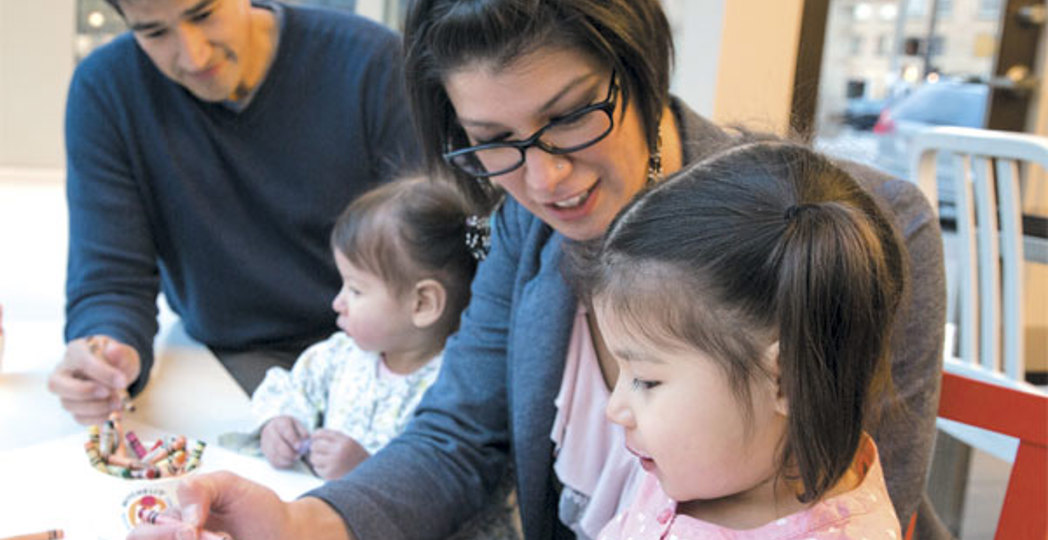Our Millennial Moment: Family Ties
Joe and Cynthia Connolly enjoy the fruits (and ice cream!) of raising kids in Ohio City.
by Rebecca Meiser | Mar. 21, 2016 | 4:00 AM

Cynthia and Joe Connolly were in their mid-20s and two years away from being engaged when they bought a century-old Victorian home together in Ohio City.
It was 2008, but kids were on their mind even then. "There was a playground right down the street and a community garden," says Joe, a 34-year-old aerospace engineer who grew up in Niagara Falls, New York, and moved to Cleveland in 2004 for a job at NASA. "I thought it would be fun to walk with our family to all the different coffee and ice cream shops."
In 2013, Cynthia, a 31-year-old resource development manager for Policy Matters Ohio, gave birth to Vivian. When the Connollys told their parents they were planning to raise children in the city, they looked at them with a mixture of confusion and horror. "Our families grew up pretty low income," explains Cynthia, who was raised in Detroit. "Back in the day, those with the means moved out of the city into the suburbs. Joe and I both have good jobs, and they just could not understand why we would opt to stay in the city."
But neither Joe nor Cynthia could see themselves as Subaru-driving, Starbucks-drinking parents. Nor did they want that sort of typical suburban experience for Vivian and 18-month-old Cora.
"One of our favorite things to do as a family is pull out our wagon and walk down the street to get coffee at Phoenix," says Cynthia. "The kids get cups of milk, then we walk to the West Side Market. These are experiences you are just not able to have in the suburbs."
The Connollys, both Native American, wanted their children to grow up with a diverse understanding of life. "It's not just racial diversity we were interested in," says Cynthia. "We wanted our kids to live alongside people with different education and income levels." On the family's weekend walks, they pass a $250,000 home, a beat up convenience store and a homeless shelter.
Two things initially gave them pause: schools and safety (lightbulbs have been stolen from the front porch and Joe's car has been broken into). "The police really make a point to know their community members," says Cynthia. "I know that if we ever had a serious problem, we'd be taken seriously."
And with the opening of the highly regarded Near West Intergenerational School in 2011 and the downtown Campus International school in 2010, education is no longer a concern. "Our biggest problem at the moment is picking between them," says Joe, "which is a good problem to have."
"Ohio City is a neighborhood," says Cynthia. "It's just that it's an urban neighborhood, not a suburban one."
Trending
-
1
-
2
-
3
-
4
-
5










